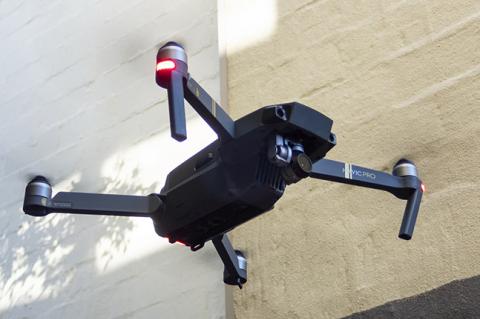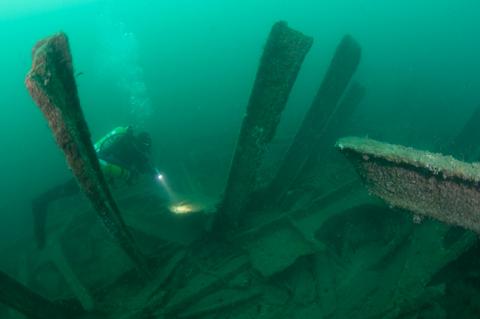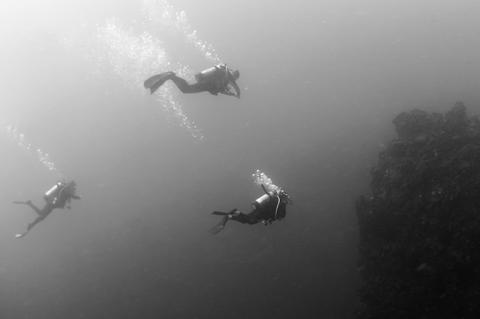X-Ray Mag #87
Main features in this issue include:
A Matter of Sentience
Fish feel pain, or don’t they? Despite a growing body of sound evidence that fish do indeed feel pain and are sentient beings capable of all the types of cognition found in the “higher” mammals, with the possible sole exception of the ability to imitate, a group of critics seems to systematically seek to discredit this research. But for what reasons? Ila France Porcher takes a closer look at the stakes involved.
It was in 2003 that Dr Lynne Sneddon of the University of Liverpool found through rigorous scientific research that fish are sensitive to pain and suffer. In the years since then, many other researchers around the world have confirmed her findings and expanded on them.
Drones & Underwater Photography
One of the things I learned quickly when first writing for X-Ray Mag was that it is often the images there were not taken underwater that can make an article about a specific location really stand out. As was pointed out to me, one ornate ghost pipefish looks pretty much the same as another. As proud as you may be of the images from your last trip, are they that much different from those of the one before?
Fluoroscent Photography Underwater
On a night dive in the Philippines several years ago, I had an opportunity to do a "fluoro" night dive. Atlantis Dive Resort rented blue underwater flashlights and yellow filter shields that went over divers' masks. Geared up, I set off into the night. The blue light was very dim and the dive was much darker than a normal night dive.
I suddenly felt like I was in a neon video game with the underwater world transforming into vibrant greens, reds and yellows. A bright, glowing light snaked across the sand, and on closer inspection, it was an eel that was vivid green.
Getting the Boys Out: Tham Luang Cave Rescue
On Saturday, 23 June 2018, a football team of boys in Thailand, aged 11 to 16, finished practice under the watchful eye of their 25-year-old coach, Ekkapol Chantawong. The group then cycled to and entered a popular tourist attraction, Tham Luang Cave. Some of the boys had never visited it before and were curious to know what it looked like. They explored the cave for about an hour before turning around and retraced their steps.
At 10:00 p.m., Kummongkol led the first responders into the cave. The team of 14 local rescue workers set up a light and found the boys’ bicycles and sports equipment, which had been left near the entrance to the cave.
Grenada: Spice Isle of the Caribbean
Anchored at the southern end of the Grenadines in the southern Caribbean, Grenada, known as the "Island of Spice" due to its nutmeg and mace production, has long been on my radar. Being tropical and scenic with good diving and a short flight from home, how could one NOT be enticed?
Although Air Canada offers non-stop flights from Toronto on Mondays, the flight was nearly full and expensive. Instead, I opted to fly Caribbean Airlines via Trinidad, which offers daily connecting flights to Grenada's Maurice Bishop International Airport.
Kelly Clause Portfolio
American artist Kelly Clause is a California native and avid scuba diver who creates elegant and sublime water color paintings of marine life, from giant humpbacks and sperm whales to curious sea lions and octopuses to fronds of graceful sea kelp. X-Ray Mag interviewed the artist to learn more about her artwork and perspectives on the underwater realm.
"Saltwater swells and living creatures alike contain a sort of wild mystery, which I believe all humanity craves. When we transfer our gaze from screens and schedules to the wild eye of nature, we are often filled with a healthy dose of bewildered humility."
— Kelly Clause
Kyarra Wreck Turns 100 Years Old
“Crikey,” I thought, “one hundred years ago today that German U-boat was awfully close to the English coast.” I suddenly felt a bit vulnerable. World War I happened right here—just off the peaceful Dorset shore, not in some far-off French trench. A century ago today, I could well be on a sinking ship. Or dead.
Dateline: Saturday, 26 May 2018
Destination: SS Kyarra
Chart co-ordinates: 50°34,90N; 01°56.59W
Mexico: American Crocodiles in Banco Chinchorro
The pursuit of unusual and compelling photo opportunities has led me on some interesting journeys over the last few years, but few come close to the raw excitement of photographing the American crocodiles of Mexico’s Banco Chinchorro!
Being an Australian citizen, my thoughts were immediately drawn to the saltwater crocodiles of the Northern Territory, an animal that hits the headlines quite regularly because of its deadly attacks on humans.
Randall Arauz: The War for Sharks
Biologist Randall Arauz has worked for nearly 30 years for the protection of the marine life off the shores of Central America and his native Costa Rica.
Arauz founded the Association for the Restoration of Sea Turtles (PRETOMA) in 1997, and it was during his efforts to protect critically endangered leatherback sea turtles that he stumbled upon the shark finning problem.
Saba: Pristine Gem in the Caribbean
I loved Saba before I arrived. Throughout my dive travels, I had occasionally heard about this mythical island of which not many knew. Tales of a small dormant volcanic island with healthy reefs, hiking trails crisscrossing its eight square kilometers, and excellent food.
Being in the general vicinity of Saba and having a little free time, I decided to finally make my way to this island, which has lingered in my diving dreams. Officially a special municipality of the Netherlands, Saba is part of the Leeward Islands and Lesser Antilles with St.
The Loch Etive Spurdogs
Over a number of years, the actions of fishermen and sea anglers have attracted the attention of marine scientists at the Dunstaffnage Marine Laboratory who quickly became aware of these fishers catching spurdogs in the Loch Etive area near Oban on the west coast of Scotland.
Glen Coe and Glen Etive cradle Loch Etive all the way to the western shores of Scotland and was used as a through-road by our ancestors.
Tips: Drone Photography for Dive Travel Stories
Drone photography can really spice up a dive travel photographer’s portfolio. It adds another element, dimension and a unique perspective. Safety is a primary concern with drone photography. Preparation, precaution and planning is very important. Become quite familiar with the aircraft, software and controller before taking it to a travel destination.
Tips
● Plan your still shots as well as video clips. Think ahead. Avoid shooting random images and video clips.
● Capture still images in DNG or RAW format if your system allows.
Transferring Anticipation Skills to Problem Resolution
Mike Ange discuss methods of building a safer and more comfortable diver at the more advanced levels by preventing the diver from anticipating issues before they occur. While this may sound contradictory to the earlier articles in this series, in reality, it is taking those skills to the next level.
In my previous two articles, I discussed the importance of building a comfort zone and improving the diver’s ability to anticipate problems. As divers’ skills continue to develop, they will venture into deeper water and perhaps more hazardous conditions.
What Does It Take to Be a “Good Diver?” — Part One
You are chatting with a diving friend and the conversation turns to mutual acquaintances. “Do you know Bob and Carol?” your friend asks. “Oh yes, good divers!” you reply. We will usually refer to someone as a good diver when they are not around. We will rarely say it to their face. And it is something that we all rather hope people say about us behind our backs.
This is the first of two articles aiming to provoke discussion on the topic. Suffice it to say, before I go any further, being a good diver does not just come down to amassing a wallet full of cards and a garage full of cool kit.
















